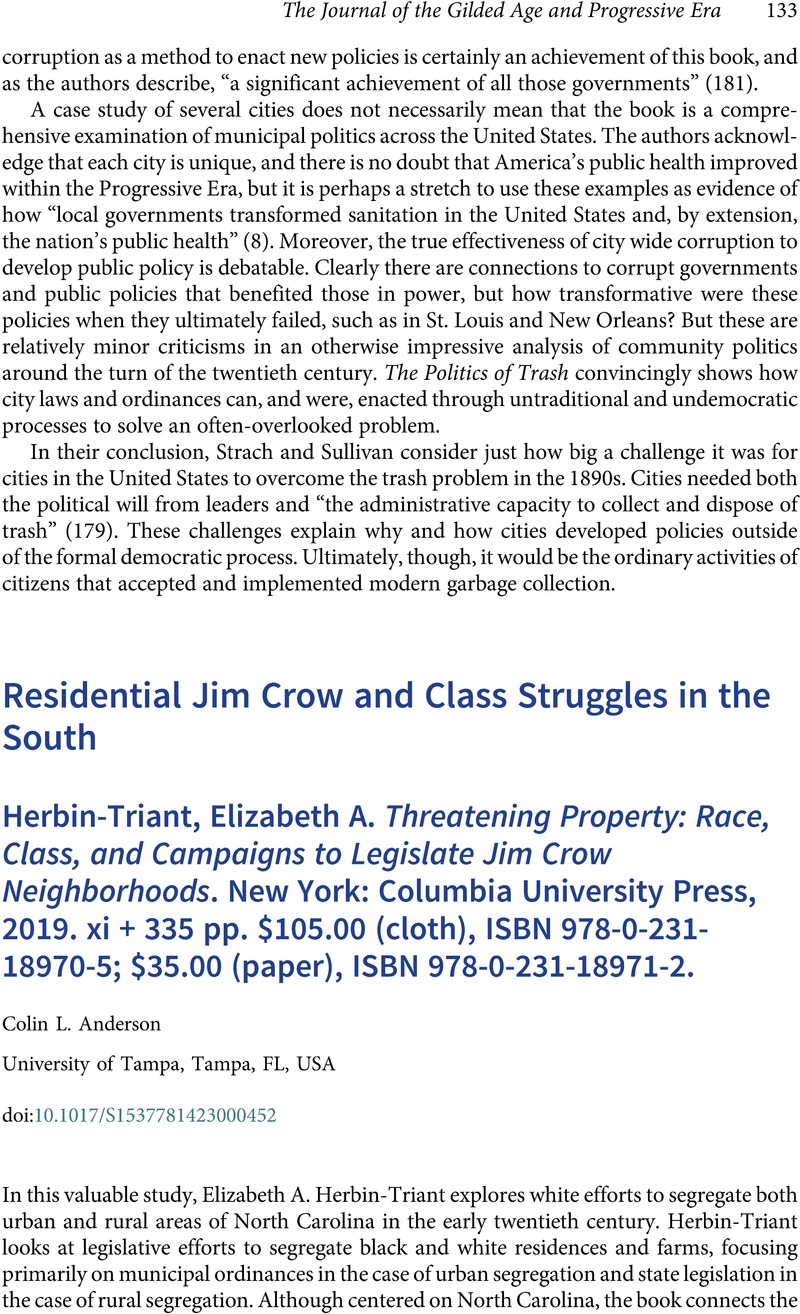No CrossRef data available.
Article contents
Residential Jim Crow and Class Struggles in the South - Elizabeth A Herbin-Triant. Threatening Property: Race, Class, and Campaigns to Legislate Jim Crow Neighborhoods. New York: Columbia University Press, 2019. xi + 335 pp. $105.00 (cloth), ISBN 978-0-231-18970-5; $35.00 (paper), ISBN 978-0-231-18971-2.
Review products
Elizabeth A Herbin-Triant. Threatening Property: Race, Class, and Campaigns to Legislate Jim Crow Neighborhoods. New York: Columbia University Press, 2019. xi + 335 pp. $105.00 (cloth), ISBN 978-0-231-18970-5; $35.00 (paper), ISBN 978-0-231-18971-2.
Published online by Cambridge University Press: 16 April 2024
Abstract
An abstract is not available for this content so a preview has been provided. Please use the Get access link above for information on how to access this content.

- Type
- Book Reviews
- Information
- The Journal of the Gilded Age and Progressive Era , Volume 23 , Special Issue 1: Special Issue: Literary Studies and the Gilded Age and Progressive Era , January 2024 , pp. 133 - 135
- Copyright
- © The Author(s), 2024. Published by Cambridge University Press on behalf of the Society for Historians of the Gilded Age and Progressive Era (SHGAPE)


